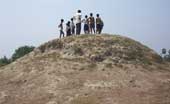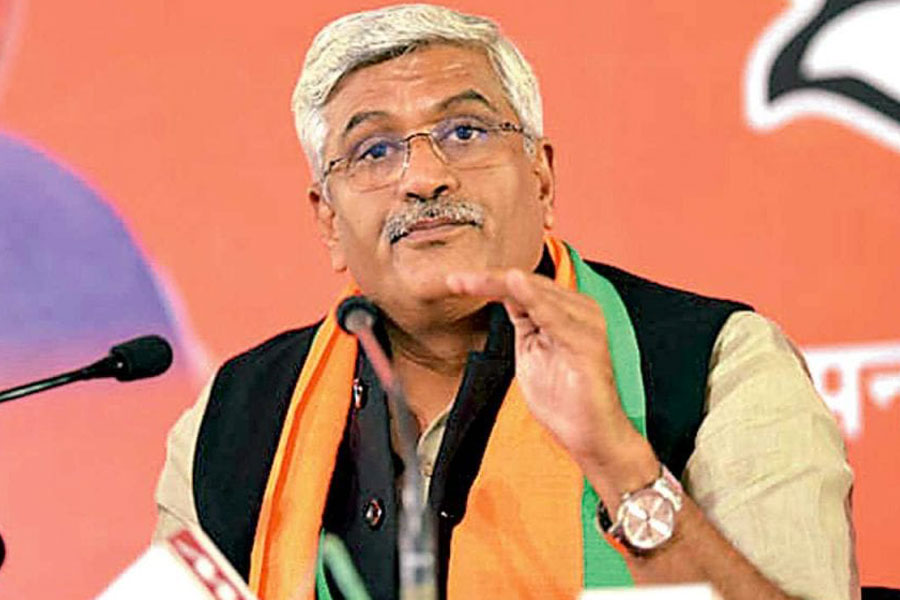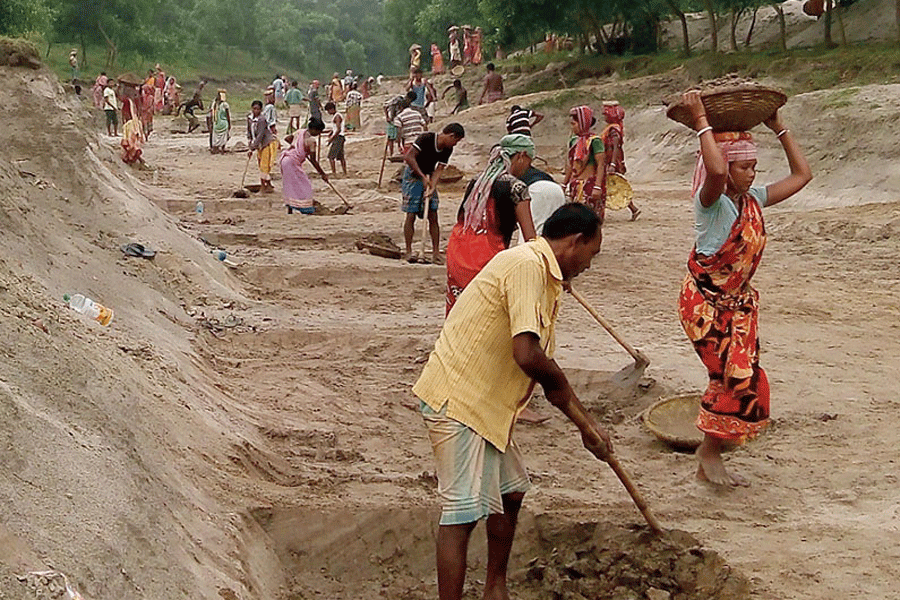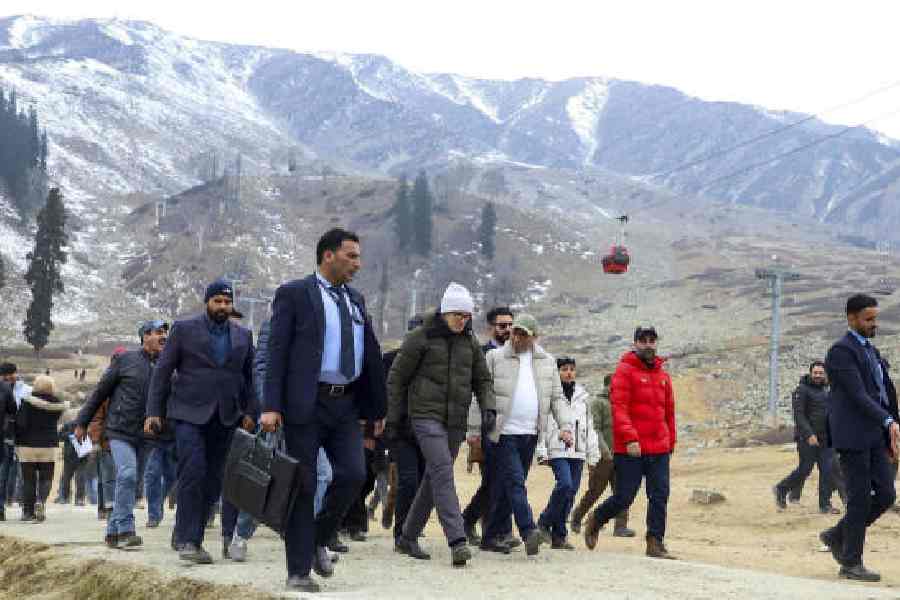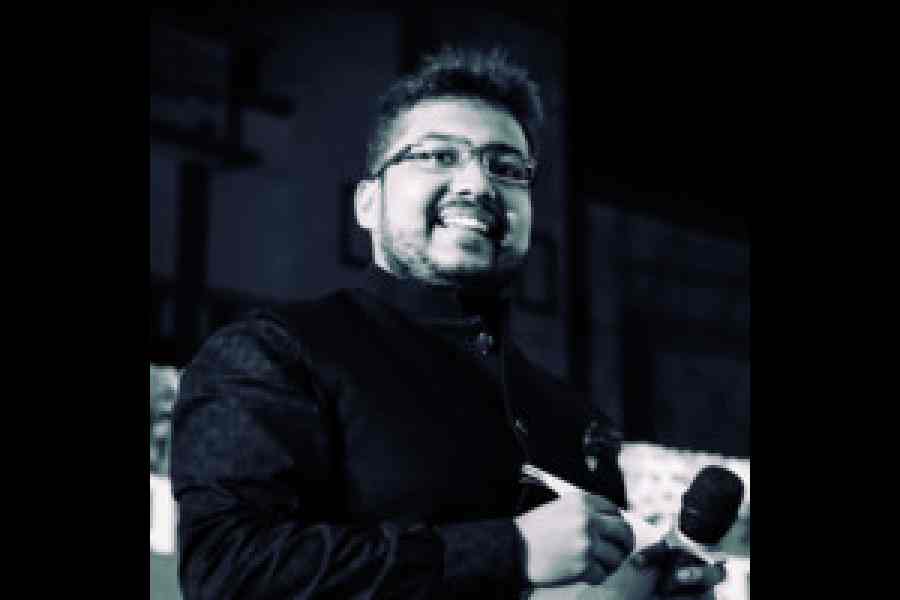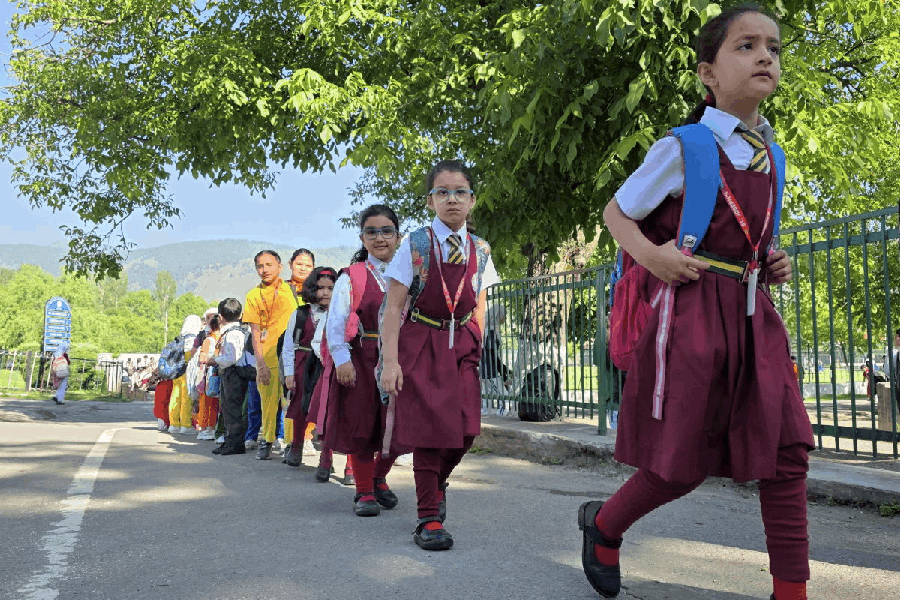 |
| A mound discovered recently at Turki in Bihar?s Vaishali district. Telegraph picture |
Patna, May 7: A forgotten chapter of ancient history is emerging, slowly and silently, in Bihar with Patna?s KP Jaiswal Research Institute identifying as many as 70 Buddhist stupas, 50 of which remain buried underground.
The Archaeological Survey of India (ASI) approved project plans to document all the stupas by September this year, said director of the institute Vijay Chaudhary.
Buddhist texts indicate that when the Buddha died, he was cremated and the ashes were divided into eight portions and buried under special mounds or stupas raised in his hometown and at seven other locations, including Vaishali in Bihar.
Historians identify four types of stupas. There are those which are built over relics of the Buddha or a saint while others were raised over objects used by him. Some of the stupas commemorated important events and some others were raised as an act of devotion.
Chinese traveller Hiuen Tsang, who spent 15 months at Nalanda and travelled extensively in the region, had spoken of hundreds of stupas lying in ruins in Pataliputra.
Though Bihar derived its name from the Buddhist ?vihara? and remains an important centre of pilgrimage for Buddhists the world over, little or no attempt has been made to even document the stupas, statues and other remains, let alone restore them.
Chaudhary alleged that scores of valuable statues have been stolen and smuggled out of the country. Some of them keep surfacing, he said, at auctions in Europe. The director hoped that the present exercise would help generate awareness on the Buddhist heritage of the state and also promote interest in the Buddhist circuit.
Recalling a recent experience at Belaur, 10 km from Nalanda, Chaudhary said it was only after an old Banyan tree was uprooted by a strong wind that the villagers discovered a 5.6-ft black basalt Bodhisattva statue.
It was, in all probability, hidden by monks in a basement for protection from invaders, said historians. The statue escaped the eyes of the invaders and remained hidden underground as the elements gathered over the ruins and vegetation grew over time.
Only three of the 70 stupas have been fully documented so far, conceded Chaudhary. Of the three, the one at Ghataro (Vaishali) is 57-ft long, 55-ft wide and 12-ft high. Another, a 45-ft high stupa lies atop a 500-ft hill at Giriak near Nalanda.
These are the earliest mud stupas, encased in burnt-brick during the Kushan period. The documentation is slow, he said, because as many as 50 stupas are still buried and require excavation.
Chaudhary further pointed out that the eight fully exposed stupas were in Vaishali, Bodh Gaya, Rajgir and Champaran. The survey team is also small, with three archaeologists, a surveyor and a technical assistant.
Eminent historian R.S. Sharma welcomed the survey undertaken by the research organisation but lamented the indifference of successive governments. Besides, he added, the archaeology department and even the ASI were sitting over studies on monuments. The reports have not been made public for reasons unclear, the historian said wryly.
A lot more needs to be done to unravel the state?s Buddhist past, Sharma held.

